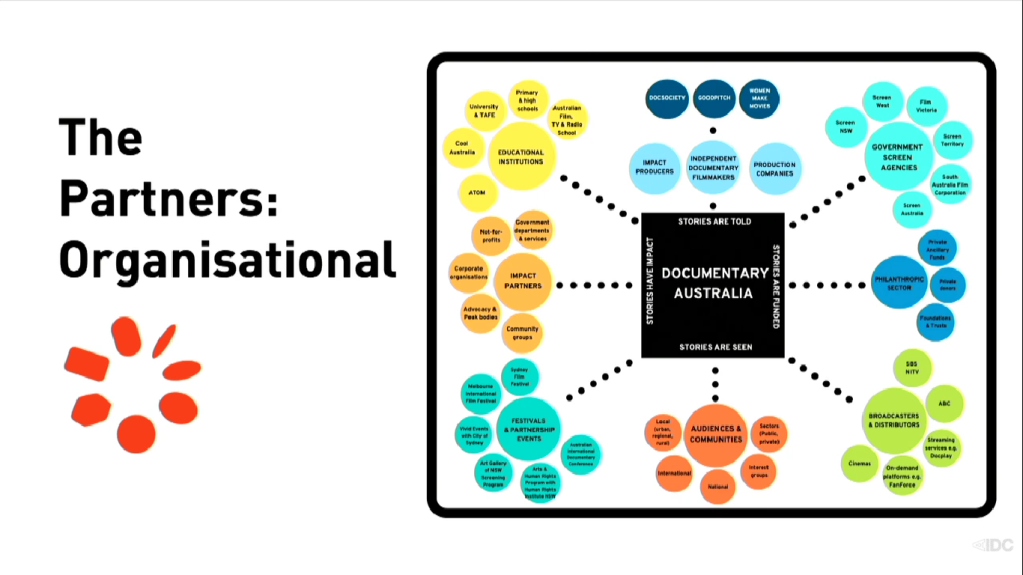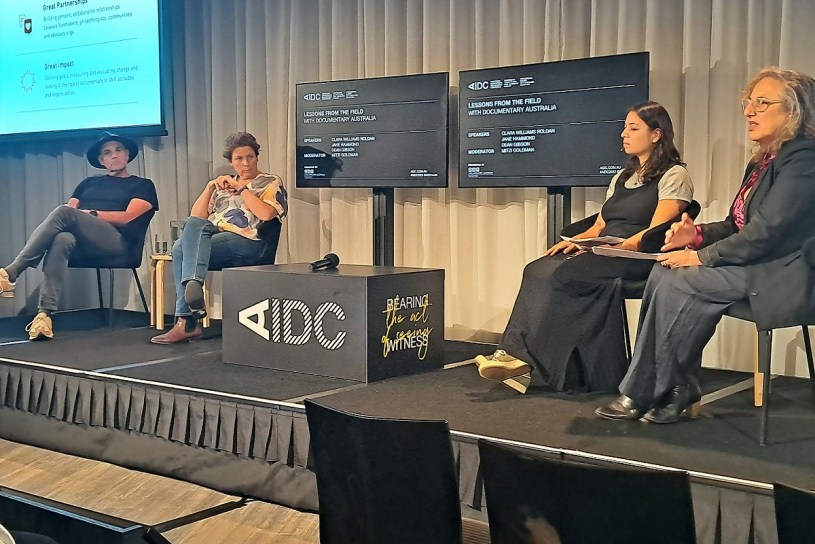A new look Documentary Australia Foundation took the stage at the Australian International Documentary Conference (AIDC) on Wednesday to reveal an updated name and logo, as well as highlights from its 2022 Impact Report.
The organisation will henceforth be known as Documentary Australia, with an accompanying emblem comprising seven distinct windows arranged in a circle.
Designed by Sydney-based graphic artist Therese Leuver, the symbol is meant to represent key impact areas: environment, youth, Indigenous, human rights/social justice, health and wellbeing, women and girls, and the arts.
CEO Mitzi Goldman told IF the brand refresh had been discussed across the past couple of years amid the construction of a new website and more pronounced advocacy activities.
“We started the process [of a digital transformation] towards the beginning of COVID, which forced us to do everything we’re doing online, so it sped up but we were poised to be moving in that direction anyway.
“We’re revealing a new website in the next couple of months and developed a whole new hub for filmmakers to be able to speak with one another.
“We’re a very platform-based organisation so it’s about us trying to get out of the way a bit and have filmmakers speak to each other and share resources, experiences and knowledge from working in this quite different way over the last few years.
“I think we naturally grew into a role that was perhaps expected and appreciated by filmmakers in terms of sharing what we’ve learnt and bringing filmmakers together, while also leading the charge [in lobbying against] the government’s recent tax reforms.
The announcement coincided with a preview of Documentary Australia’s 2022 Impact Report, which is set to be released later this month.
Containing data from the past three years, the 85-page document outlines the not-for-profit’s organisational partners across six categories – impact, festivals and events, audience and communities, educational institutions, broadcasters and distributors, independent documentary filmmakers, and the philanthropic sector.
According to the report, the organisation facilitated $4.5 million in tax-deductible donations for documentaries and supported the funding of 170 films in the 2020/21 financial year.

Documentary Australia impact and education director Clara Williams Roldan said the numbers reflected how filmmakers had been successful in “convincing people documentary is an artform and a form of impact worth investing in”.
“Behind that $4.5 million is a huge sway of different donors,” she said.
“These numbers look impressive but the more interesting thing as we dive into it is what these numbers actually mean.
“You don’t measure impact by the amount of money you’ve raised or how many people have seen your film – it does have to be deeper than that.
“So what we’ve tried to do with this report is tried to define how we’re measuring our organisational impact but also give all of you a framework about how all of you can define what meaningful impact is for you and how you can measure it, report it, and keep people coming back to support this incredible artform.”
Goldman and Rhodan were joined by Incarceration Nation director Dean Gibson and Cry of the Forests filmmaker Jane Hammond at Wednesday’s session, with the respective projects acting as case studies of what can be achieved in the realm of impact.
Hammond’s film, which examines the plight of WA’s unique forests and their value in mitigating climate change, was used as part of a successful campaign to stop the government from logging native forests, with Premier Mark McGowan announcing last September that the practice would cease from 2024.
Goldman said it was important to remember that “change was possible”
“We can win,” she said.
“We won a little advocacy battle for the documentary sector last year and these films are obviously incredibly powerful tools.”



